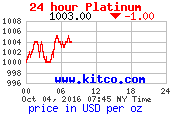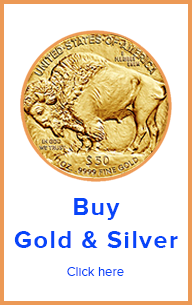Gold Watch Cash Offers
Gold Watches Part 4
Offering Cash for Gold Watches
In world of the gold buyer, most transactions are cash, no return, irreversible deals. Once payment is made, it is a done deal. Needless to sell, as in any buy and sell business, the earning is made at the time of buying. So, the buying needs to be done right. Any earning above that are just welcome bonus.
The best way to offer for gold watches is to know as much as possible about them. That was covered in Part 1, Part 2 and Part 3. With that knowledge it is much easier to arrive to reasonably close gold mass estimates.
The three steps for making effective gold watch offers are
- Inspection
- Comparison approximation if possible
- Disassembly if possible
Note: Magnets are of limited use in inspecting gold watches, because the movements have enough magnetic material.
Gold Watch Inspection
- The first thing to do when offering cash for a gold watch is to inspect it. Doing this will help you as quick as possible weed out not solid gold watches. Not only that, it will help you know what kind of gold watch you are dealing with.
- If the watch is gold, most likely at the back of the watch it will say so. Look for the fineness hallmark, such as “14K”, “18K”, “585”, “750”, etc. Another possibility is that the back will be engraved with and indication such as “Steel Back, 14K Bezel”. If this information is present, it is evident how much of the watch is gold.
- Often with older watches, more so if they are small, most likely the fineness hallmark may be on the inside of the watch back. In this case, the watch is not waterproof, and the back cap is made such as to easily be removed. Look for the gold fineness hallmark there.
- If the gold fineness hallmark is not present, inspect the patch for wear marks. For this use a loupe or some other magnifier, preferably 10 power. Used watches always have wear marks. If a gold plated or gold-filled watch has been used often enough, eventually, enough surface material will be removed that the core will be visible. Wear points develop sooner on edges and corners. Sufficiently worn-out gold-filled watches will have green corner spots. That is were the brass core is visible.
- In the higher end gold watches with leather straps, check the buckles. If the buckle is gold fineness hallmark stamped, then that part is also gold. Otherwise most likely not.
- If the watch strap is metal, first test it with the magnet.
- A mesh gold band will not be magnetic, at will be hallmarked for gold fineness. It is the same with gold link bands.
- That a mesh gold band is not magnetic does not mean that it is solid gold. If there is a possibility of this, test with nitric acid
- Most often elastic gold watch bands are made of steel springs and links with gold filled or plated surface. Other have solid thin gold plates outers. Those are hard to remove. Pay accordingly.
- Strap gold link pins are often enough not gold, but steel. Use a magnet to determine this. If the pins are not gold, pay accordingly.
- It is also possible, with lower end gold watches, that the link pins may be brass. In that case the magnet will not help. If that is a possibility, test with nitric acid.
Gold Mass Approximations – Comparison Method
As stated above, nothing beats taking a gold watch apart and only weighing the gold components. When that is not feasible, below is the best way to arrive at a realistic gold mass approximation. My favorite way to accomplish this is by the comparison method. This is how it works.
- Collect several movements and lenses from a variety of pocket and wrist watches that have already been taken apart. These will be your comparison tools.
- Find the closest movement / lens combination in size and weight to that of the subject gold watch of the offer.
- Consider that in wrist watches, automatic movements are heavier than quartz movements. So act accordingly. That is not an issue in gold pocket watches.
- In the case of gold pocket watches, consider the cap and bezel thicknesses. Based on how thin or thick the watch is, and any clues on how the watch is built, estimate an approximate of how much non-gold / non-movement mass there may be. These include springs, steel stems, structural element, etc. This mass can be significant in some pocket watches.
- If it is a wrist watch, and the band is not solid gold, preferably remove the band.
- Add all that mass mentioned above. We will call this the “non-gold mass”.
- Weigh the complete watch.
- Subtract the non-gold mass from the overall gold watch mass.
- The resulting figure is a very good approximation of actual gold mass of the watch.
- Allow for a margin of error when making the offer.
- If there are diamonds, add to the offer accordingly.
Quick Gold Mass Calculations
Sometimes the way a gold buying transaction happens, what is needed to have a quick offer. For that, a quick figure that will work for the gold buyer but will not be so low that it will not work the seller is needed.
Using the multipliers below is just a little better than shooting from the hip. These multipliers should be only used for gauging if the seller is serious about selling, make quick offer, and such situations.
- 5/8 Multiplier. Higher quality gold pocket watch with thick bezel, and caps, double movement caps, and gold lens protector, with immediately findable gold fineness hallmark
- 3/8 to ½ Multiplier. Same as above, but without gold lens protector.
- ¼ Multiplier. For gold pocket watches same as above but with thin material bezels and caps.
- 3/8 Maximum multiplier for most automatic gold wrist watches, not including the band if is not gold.


![[Most Recent Quotes from www.kitco.com]](http://www.kitconet.com/charts/metals/gold/t24_au_en_usoz_2.gif)
![[Most Recent Quotes from www.kitco.com]](http://www.kitconet.com/charts/metals/silver/t24_ag_en_usoz_2.gif)
![[Most Recent Quotes from www.kitco.com]](http://www.kitconet.com/charts/metals/platinum/t24_pt_en_usoz_2.gif)










